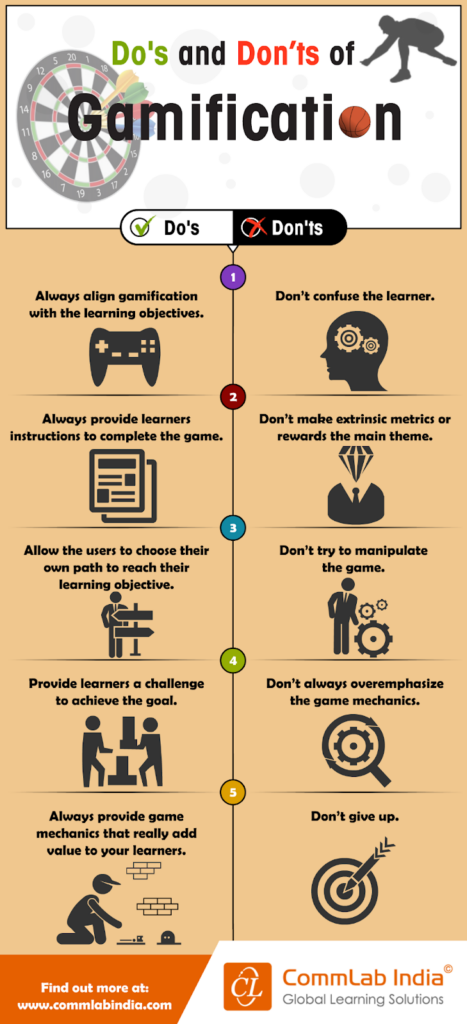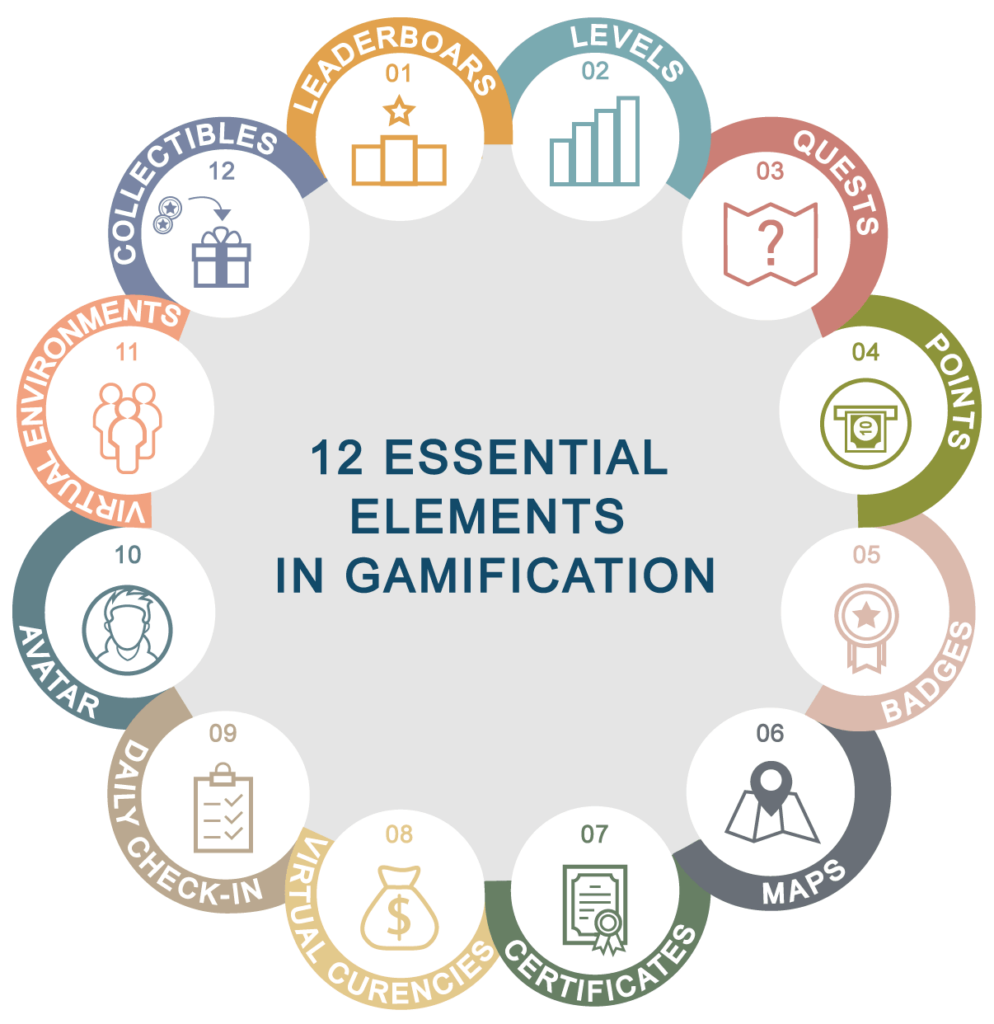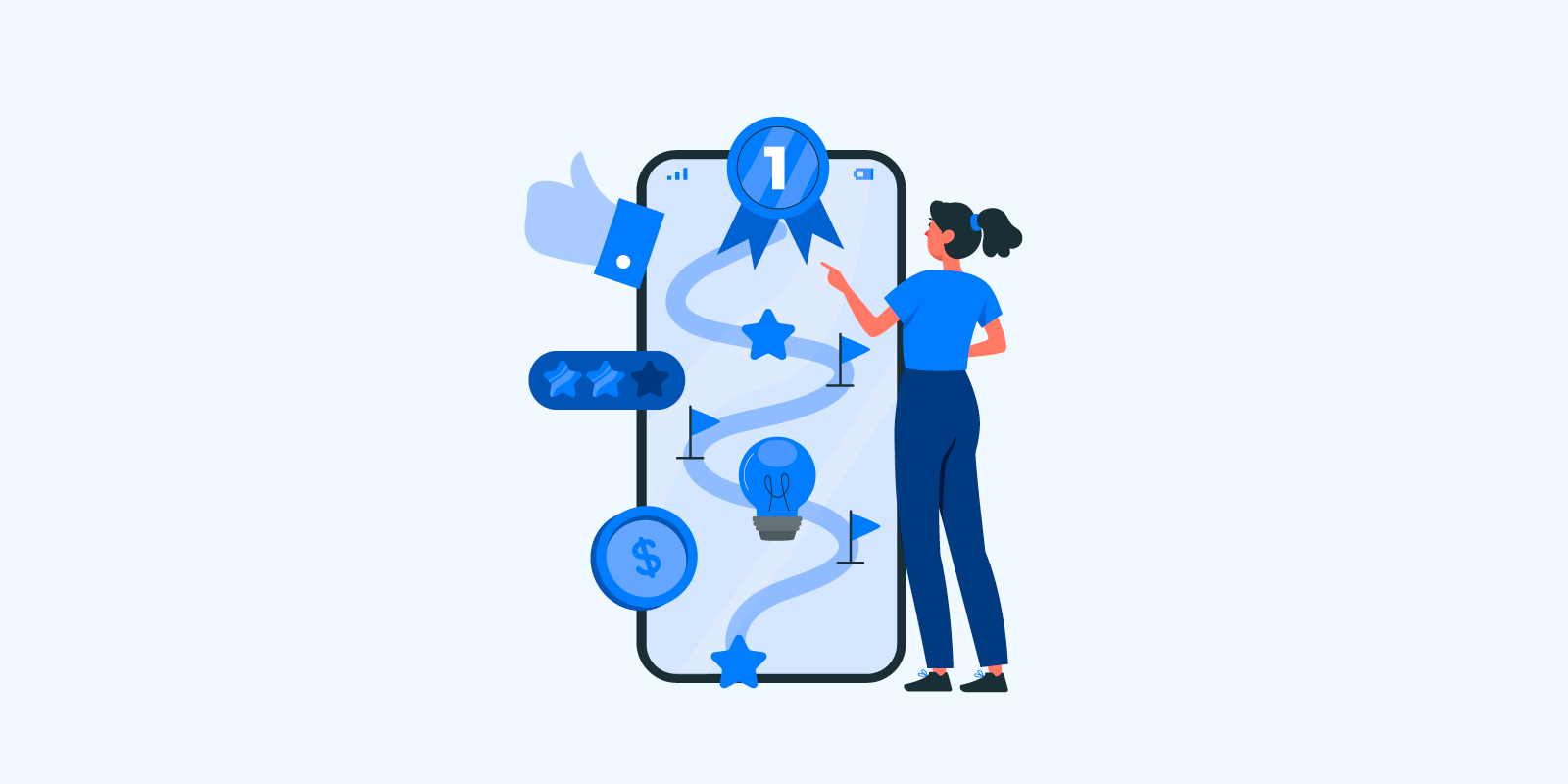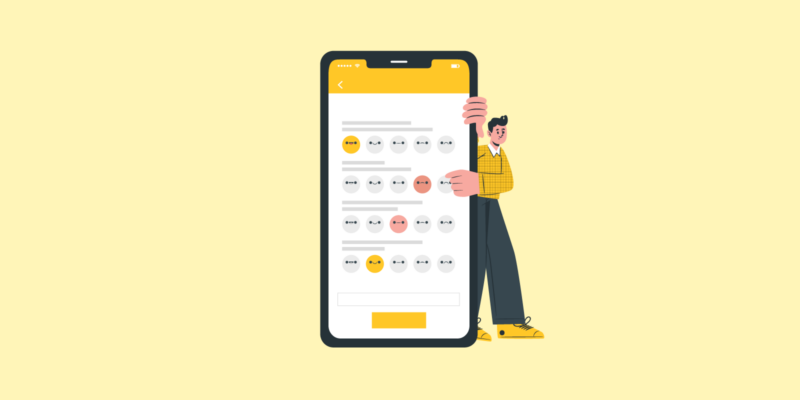Are your online forms more of a snooze fest than an engaging interaction? Have you ever wondered how to make form-filling feel like a game your customers don’t want to stop playing? If you’re nodding along, you’re in the right place.

Basically, gamification is about making users active participants instead of passive bystanders. It helps you transform routine processes like data collection through forms into interactive and captivating experiences.
In marketing, gamification is more than just a trendy concept. It can transform the tedious task of filling out forms into an exciting game for your audience online, allowing you to infuse the fun and excitement of gaming into non-game contexts to boost user engagement and motivation.
Let’s explore why gamification is not just a buzzword but a game-changer in digital marketing.
In this article
Understanding Gamification Principles
Gamification strategically uses game-like elements, such as challenges, badges, rewards, and points, to enhance engagement, motivation, and participation. It leverages psychological and behavioral principles from game design. These principles encourage users to complete tasks, interact with content, and achieve specific objectives.

Key Gamification Elements
With key gamification elements, you can drive user participation and achievement. These include:
- Points: These are fundamental components that serve as a way to track the user’s progress and achievement. When users complete specific actions or tasks, they can earn points. It provides a tangible sense of accomplishment.
- Badges: These represent achievements. You can award badges to users when they reach certain milestones, exhibit specific behaviors, or accomplish challenges. Badges can provide a sense of recognition and status.
- Challenges: With the help of challenges, you can introduce an element of competition and accomplishment. Present users with objectives or tasks with different difficulty levels. A reward can motivate your target audience to overcome challenges.
How Does Gamification Drive User Engagement?
For user engagement enhancement, gamification is a powerful strategy in digital contexts. Here’s how it can help drive user engagement:
- Gamification taps into intrinsic motivation, the desire to engage in an activity for its own sake. You can’t drive engagement solely for external rewards. Users will participate when they find the process enjoyable.
- Challenges, badges, and points provide a sense of achievement. These can trigger a release of dopamine, a feel-good neurotransmitter. Due to this positive reinforcement, users remain motivated and engaged.
- Gamification includes social sharing or leaderboard features to foster healthy competition among users. The desire to outperform peers or share accomplishments with friends can drive engagement.
- Set clear goals and provide a structured path to achieve them to encourage users to take specific action. This goal-oriented behavior can align with your digital marketing objectives.
Gamified experiences can also help you collect data on user behavior, preferences, and choices. You can use this data to personalize content and offers while creating a more engaging and relevant customer experience.
Benefits of Gamification in Forms
Before diving into gamification strategies, let’s explore its benefits.
Enhanced User Motivation and Participation
Gamification taps into the intrinsic motivation of users to make the form-filling process enjoyable. When users find the experience engaging, they are motivated to participate.
Points, badges, and challenges provide a sense of accomplishment. When users strive to earn these rewards, you can keep them engaged throughout the form because they aim to achieve these milestones. Encourage users with leaderboards and competition elements to actively engage to outperform their peers.
Users can also compete to earn the most points or complete challenges which is an excellent way to drive higher levels of participation. With gamification, you can set clear goals for users within the form. These goals provide a structured path for users to follow and motivate them to complete the required fields.
Data Quality Improvement
If you want to collect data through forms, you should implement gamification. You can motivate users with valuable rewards to reduce the chances of incomplete submissions. Gamified forms maintain user attention throughout the process and reduce the likelihood of users providing inaccurate information.
Don’t forget to use progress bars which indicate to users when they have missed required fields or made mistakes. It’s an excellent way to prompt them to correct errors before submission.
Increased Conversion Rates
Gamification can significantly boost conversion rates on websites and apps. It helps you motivate users to complete forms, purchase, subscribe, or take desired actions.
With gamification in forms, you can collect accurate data with personalization and targeting in marketing efforts.
Gamification’s Role in User Experience
Gamification will help you create a positive association with your brand or platform. You can motivate users to return to a platform with engaging gamified elements. Ultimately, it leads to improved customer loyalty and repeat visits.
Offer a fun, interactive experience with gamified forms to influence your brand’s perception positively.
Strategies for Implementing Gamification in Forms
Here are some strategies for incorporating gamification in forms and increasing user participation and completion rates.
Setting Clear Objectives for Your Forms
When implementing gamification in forms, it’s vital to have clear objectives in mind.
For example, mattress brand Amerisleep created a survey form to get customer insights into their sleeping habits.

This survey provided a lot of helpful insights to the company and would have helped better position their products afterward.
In order to create a successful form, make sure you consider the following:
- Define Goals: Determine what you want to achieve with the form. Are you looking to increase completion rates, collect specific data, or engage users for longer periods?
- User Benefits: Make the feedback process more enjoyable and beneficial by introducing gamification. Give your target customer a reason (reward or benefit) to fill out the form. It will increase the willingness of customers to share their opinions.
- Measurable Outcomes: Measure success by tracking the increase in feedback submissions, user satisfaction with the new form, and the quality of feedback received.
Choosing Appropriate Gamification Elements
Gamification elements should align with your objectives, so be careful in selection. For example, let’s say you’re creating a registration form for a fitness app. To encourage users to complete their profiles, you should incorporate the following gamification elements:

- Points and Rewards: Users earn points for each completed profile section (e.g., personal details, photo upload, fitness goals). They can redeem these points for in-app rewards like nutrition tips or workout plans.
- Leaderboards: Users can see how their profile completion rate compares to others in their fitness group which can foster a sense of completion and achievement.
- Progress Bars: A progress bar at the top of the form visually shows users how close they are to completing their profile.
- Timed Challenges: Offer bonus points for users who complete their profiles within a specific time frame. It will create a sense of urgency.
- Instant Feedback: When users complete a profile section, send them encouraging feedback, such as “Great Job! You are one step closer to reaching your fitness goals”.
Crafting Engaging Challenges and Rewards
Gamification is incomplete without engaging challenges and rewards. For example, imagine you’re designing a feedback survey for a restaurant.
To make it engaging, you can incorporate challenges and rewards.
- Challenges: Turn the survey into a contest where users answer fun trivia questions about the restaurant. They will earn points for each correct answer. Ask them to complete challenges like sharing a photo of their meal.
- Personalization: Offer personalization discounts or complimentary appetizers based on the user’s preferences indicated in the survey.
- Storytelling: In the gamified online surveys, you can add a section for storytelling. Encourage users to describe their most memorable dining experience at the restaurant. The best stories could win a gift voucher.
- Hidden Surprises: Add surprise rewards for users who provide detailed feedback. For example, they might unlock a secret menu item or receive a voucher in their survey completion confirmation email.
User-Centered Design for Gamified Forms
To encourage users to participate, you should focus on a user-centered design.
Imagine you’re developing an interactive career assessment form for a job search platform. Pay attention to the following:
- Mobile Optimization: Make sure the form is responsive and functions seamlessly on desktop and mobile devices. It’ll allow users to access and complete it conveniently on any device.
- Feedback and Guidance: When a user selects a career preference, provide immediate feedback on how suitable that preference is for them. Moreover, offer guidance and resources for further career exploration.
- A/B Testing: Continuously test gamification elements like point systems, leaderboards, or progress bars to determine which resonates best with users. You can fine-tune the gamification elements based on user feedback and performance data.
- Data Analytics: Monitor user interaction, completion rates, and the types of challenges or rewards that are most effective in driving engagement. Analyze this data to make data-driven improvements.
- Clear Communication: Throughout the form, communicate the benefits of using the platform and completing the assessment. For example, participants can find a suitable career path. Ensure users understand how the gamified elements enhance their experience and improve their job search.
Tracking User Engagement and Completion Rates
When tracking user engagement, it’s important to pay attention to the following elements.

Completion Rate
This metric measures the percentage of users who start the gamified form and successfully finish it. A high completion rate indicates that your gamification strategy is engaging users effectively. For example, if you implement a gamified survey form, track how many users begin the survey and how many complete it.
Suppose you start with a 30% completion rate, and after improving the form, it increases to 50%. This is a positive sign for better user engagement.
Time Spent
Measure the average time users spend on the form. This may indicate how engaging your gamification elements are and whether users find the experience enjoyable. For example, you introduce timed challenges or mini-games within the form. You will analyze the average time users spend on these interactive elements.
If you observe a significant increase in the time spent, it suggests that these gamified features engage users.
Bounce Rate
This metric measures the percentage of users who abandon the form shortly after starting it. A high bounce rate may indicate that your form is not engaging for users or there are some issues with the form.
Do you notice a high bounce rate on a gamified landing page where users are expected to complete a lead generation form? If yes, it is time to reconsider your gamification strategy to keep users engaged and motivated to stay on the page.
Conversion Rate
Calculate the conversion rate by comparing the number of users. You can then compare the users who completed the gamified form to the total number of users who interacted with it. A high conversion rate means the form effectively encourages users to take the desired action.
For example, imagine you have a gamified registration form for an app. The conversion rate measures how many users who start the registration process successfully sign up.
If the conversion rate increases from 30% to 40% after gamification, the form has critical gamified elements. These elements successfully persuade users to complete the registration.
Pro-Tip: To further explore the financial performance of a game, pair the conversion rate with the ARPU (average revenue per user) to help you gauge how changes in the conversion rate impact your revenue.
Using Analytics to Optimize Gamified Forms

Implement A/B tests with variations of your gamified forms to see which elements or designs perform better. Use analytics tools to visualize the user journey within the gamified form. Identify bottlenecks, drop-off points, and areas where users may struggle. With this data, you can optimize the form for a smooth user experience.
Collect feedback from users about their experience with the gamified form. Use surveys, comments, and user testing to gather feedback and understand their pain points, preferences, and suggestions for improvement.
You can make iterative improvements to the form based on data collected and feedback. For example, you can optimize the user interface, adjust gamification elements, and refine challenges and rewards.
Note: Continuously monitor user engagement and completion rates even after making improvements. It will help refine the gamified form to adapt to changing user needs and preferences.
The Future of Gamification in Forms
The future of gamification in forms is exciting with emerging trends. Here are some key trends and developments in the field to keep an eye on.
Integration of AI and Machine Learning
Real-time personalization: AI algorithms will enable real-time adjustments to gamified elements based on user interaction. For instance, AI content generators could dynamically create personalized challenges and rewards based on user data and previous interactions.
Predictive Analytics: Machine learning models will predict user preferences and behaviors. It allows forms to present gamified experiences that align with user expectations proactively.
Emotion Recognition: AI-driven tools will detect user emotions and tailor gamification elements accordingly. For example, if a user appears frustrated, the form could provide an encouraging message or offer a simple challenge.
Immersive Technologies
Augmented Reality (AR) forms exist in mixed reality to make data input and interactions more engaging. For example, AR can use a maintenance report from a technician to overlay instructions on equipment that needs repair.
Virtual Reality (VR) forms create virtual spaces for user engagement and data entry. This is especially relevant for training and simulations, where users can complete tasks in a virtual environment.
Gamification Ecosystem
Cross-platform Integration: Gamification elements will be interconnected across various apps and platforms. It allows users to earn rewards in one app and use them in another. This ecosystem can foster loyalty and encourage users to explore new apps within the same ecosystem.
Multi-App Challenges: Users can participate in gamified challenges that span multiple apps. For example, a fitness challenge may involve completing workouts in a fitness app, logging meals in a nutrition app, and tracking sleep patterns in a wellness app.
Personalization for Users
Contextual Gamification: Forms will adapt to the specific context in which they are used. For example, a feedback form on a restaurant app might offer gamified elements related to food reviews, while a fitness app’s feedback form could focus on workout challenges.
Behavioral Data Utilization: Gamified forms leverage user behavior data to tailor challenges and rewards. The forms will learn from user interactions and dynamically adjust gamification elements to maximize engagement.
Ethical Gamification
Transparency and Data Privacy: As gamification becomes more sophisticated, there will be a greater emphasis on transparent data collection and ethical use of user data. Companies should comply with privacy regulations and ensure user consent.
Responsible Design: Gamified forms will be designed to focus on user well-being. Game developers and designers will consider the potential for addiction. They strive to create gamification that enhances the lives of users rather than causing harm.
Level Up Your User Engagement with Gamified Forms
There’s no doubt that gamification is a dynamic way to turn mundane interactions into enjoyable and engaging experiences. You can use game elements to motivate your target audience and drive desired outcomes.
However, it’s crucial to consider the best practices for desired outcomes. Some of the tried and tested strategies are mentioned in this post. You can give them a try. Remember, the future is bright for gamified forms. There are many exciting opportunities to redefine how users interact with your data collection process.
So, why wait? Take the next step by implementing gamified forms with Woorise to boost your conversion rates and user engagement. Your journey to elevated user engagement starts now. Don’t miss out on this opportunity, and level up your forms today.



